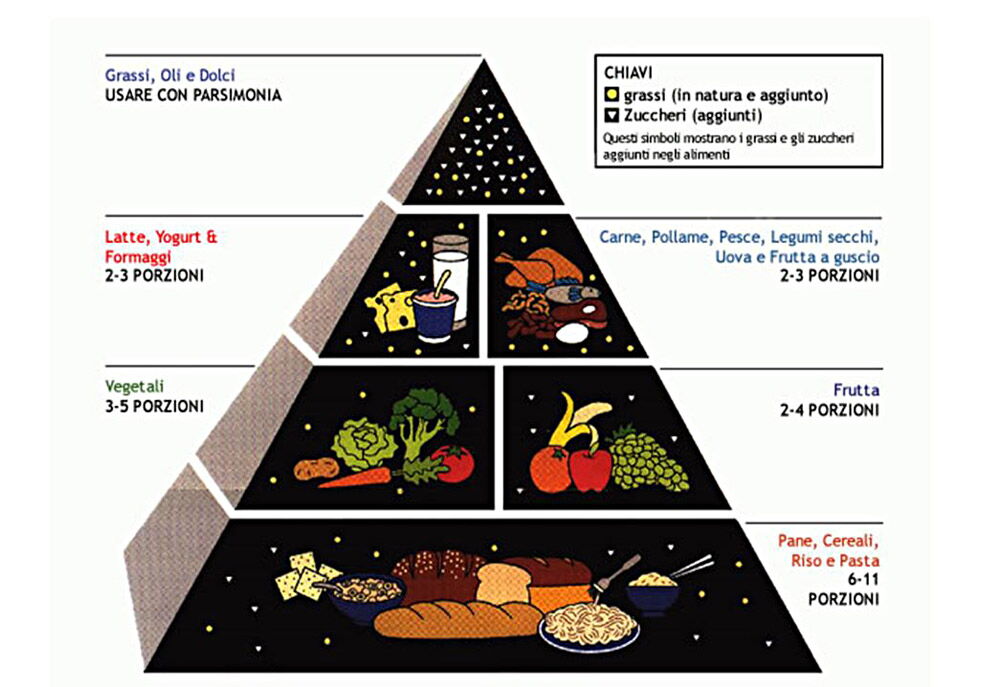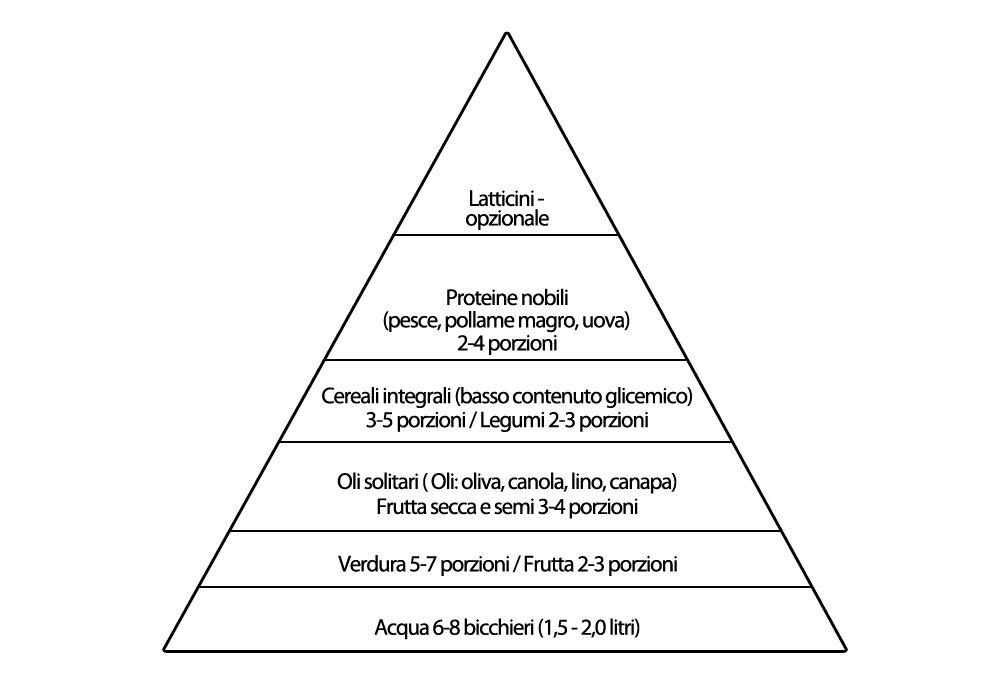A nutritious diet is essential if you want to be in good health and full of vital energy. Very few "health experts" would disagree with this statement, since history and medicine have proven it to be true. It is such a simple concept that many people forget that food provides the energy and the basic components for the body to function. This article provides the reader with a guide on which foods to eat, and why they are healthy. In addition, it will let you know which foods combat the development of diseases, to help avoid these diseases and stop them from inhibiting your vital energy.
Modern poisons
A century ago, meals were prepared using fresh, whole foods. In general, crops were grown on local land, which was considered a valuable asset. People spent quite some time preparing food, and they appreciated its inherent flavours and aromas. Today, a combination of technology and globalisation has transformed much of our food reserves into pre-packaged goods which are semi-synthetic, genetically modified and lacking in nutrients. All you need to do is check your nearest supermarkets: most of the food is stored in boxes or other types of packaging and contains preservatives which prolong its expiry date. Many people, especially in the United States, tend to overeat, but paradoxically they are also malnourished.
Tips for adopting a healthy diet
- Learn as much as possible about nutrition. This article, along with many others, contains numerous healthy and effective suggestions on the ideal approach to nutrition.
- You can be a positive influence on your children by becoming a model of how to eat in a nutritious way. Children learn much more by watching their parents than they do listening to their lectures. Follow the advice that you give to your children: you will find it an excellent way to instil healthy eating habits in them.
- Be enthusiastic about the idea of ??healthy eating. This enthusiasm stems from the belief that you truly can make a personal contribution to improving the quality of your health and vital energy.
- Be patient. In a society where poor quality food is the norm, adapting to a healthy diet takes time.
- Take action. You can have an immediate impact on your children's well-being by controlling what they put in their mouths. In addition, you have the opportunity to play a key role in preventing diseases and disorders linked to a poor diet, such as obesity, diabetes, cancer, asthenia, anaemia and many other chronic conditions.
The return to Eden
Nature produces a wide variety of foods, conceived by God and perfectly compatible with the human body. History teaches us that the more we move away from foods that grow wild or are found in nature, the more our health worsens. Some of the most interesting studies in this field were conducted by Dr Weston Price, a dentist who was also an anthropology and health enthusiast. He travelled the world to study primitive cultures and their eating habits, and found that those who ate a traditional diet - made from the fruits of the earth that they had harvested as well as meat from animals that they had hunted personally (especially fish) - were healthier and lived longer. Today more than ever, those who are conscientious about food choose to eat fresh and organic foods. We are convinced that this significant trend will gradually gain momentum as scientific research on nutrition continues to demonstrate the multitude of health benefits associated with eating natural foods.
The standard American diet: a plan to be avoided
The rate of obesity, diabetes, cancer, heart disease and many other chronic conditions continues to increase at breakneck pace, largely due to the so-called standard American diet. If you want to stay healthy, the obvious solution is to not eat what the majority of Americans do.
The standard American diet is high in refined carbohydrates - a technical term for what is essentially sugar - saturated and trans fatty acids, i.e. types of fat linked to the development of diseases, and animal proteins. A lot of commercially available food contains large amounts of sweeteners, artificial colours and preservatives. Meals normally consist of frozen or pre-cooked food (i.e. fast food), if they are not skipped completely, and usually do not include plant products such as fruits, vegetables, legumes, whole grains, nuts and seeds. Coffee, alcoholic beverages, carbonated water or sweetened fruit juices are consumed instead of water. Food products contain pesticides, herbicides and other toxic chemicals - even brands that produce food for children are not exempt. In the transition from childhood to adulthood, people have abandoned their primary instinct to eat nutritious food and have become victims of television advertising that promotes "artificial" food. For example, the Journal of the American Dietetic Association published a study of pre-school children in which the researchers highlighted that the most commonly consumed products were fruit-flavoured soft drinks, fizzy drinks, milk - for 2% - and chips; fruit and vegetables stood out in first place among the least popular foods.
The pyramid lie
In 1992, the United States Department of Agriculture released the Food Guide Pyramid. In our opinion, as well as in the view of most nutritionists, this handbook epitomises the reason why so many Americans are confused about what they should eat. In addition, we have observed that individuals who follow this kind of nutritional plan are more prone to obesity and the development of other chronic conditions.
It is sad to say, but potentially true, that the US Department of Agriculture does not act in the interests of its own citizens in terms of safeguarding their health. It falls victim to what many would call a conflict of interest, since on one hand it represents the food industry, while on the other it is responsible for developing educational policies about nutrition aimed at consumers. All you need to do is look at the emphasis placed on the number of servings of bread, rice, cereal and pasta: these are exactly the types of foods that are generally consumed in excess, and they exacerbate weight problems, heart disease and numerous other diseases linked to insulin deficiencies. Another problem is that the US Department of Agriculture recommends eating fats and oils in moderation; any expert nutritionist will maintain that essential fatty acids are crucial for good health, and the majority of the population does not consume these fats.
THE US DEPARTMENT OF AGRICULTURE FOOD PYRAMID

Balch and Stengler's food pyramid
Below is the type of pyramid that we recommend to our patients. This plan is in line with the results of modern studies on nutrition and supports the user in achieving excellent health.

A diet based on whole foods
The diet should be based on consuming whole foods which are as fresh as possible and not processed. Although it is difficult to follow a diet consisting entirely of whole foods, this is a good target to aim for when preparing your meals. A diet of this kind is much richer in nutrients and enzymes compared to industrially processed or packaged foods.
Some examples of whole foods are the various types of wholemeal bread and cereal available, fruit, vegetables, fresh fish, poultry and other meat from livestock, and nuts and seeds. In essence, any food that has not undergone industrial processing is a whole food: no more and no less than nature intended to create.

According to the Environmental Protection Agency, "the negative effects of exposure to pesticides range from mild symptoms of dizziness and nausea to serious long-term neurological, developmental and reproductive disorders. Americans use over half a million tonnes of pesticides a year to combat insects that infest crops, homes, workplaces, schools, parks, hospitals and other public places. For the first time, the EPA has requested hundreds of additional studies on pesticides to fully understand their specific impact on children (neurotoxicity during development, acute and subchronic neurotoxicity). Furthermore, the organisation has developed new tests and risk assessment methods aimed at factors that only affect babies and young children."
A varied diet
A healthy diet includes a wide variety of foods. In fact, every food has a different nutritional profile. Eating as many different kinds of healthy food as possible allows you to increase the amount and types of nutrients you consume. Not only that, but your personal tastes will broaden and your desire to eat a wide range of foods will increase after experiencing so many different flavours, textures, etc. Furthermore, a varied diet prevents the development of food intolerances, preventing problems now and in the future. Try to eat fruits and vegetables of all colours: green, yellow, red and so on; they all contain different types of phytonutrients, which are invaluable in preventing serious diseases.
Organic food: a high-quality choice
Every year, half a million tonnes of pesticides and herbicides are sprayed on US crops, and it is a very real possibility that people ingest these potentially toxic substances.
The long-term effects of exposure to pesticides and herbicides are not entirely clear, but a worrying picture is beginning to emerge. Demographic studies of the adult population suggest a link with certain types of tumours and neurological diseases. As parents and doctors, it is not wise to wait for indisputable scientific evidence to come along and link these chemicals to various diseases. Pesticides that were once considered safe and were used for decades are now banned. For example, the use of methyl parathion, a type of organophosphate insecticide, as a means of pest control for apples was recently banned.
THE RISE OF "ORGANIC"
With regard to our health, food is one of the few environmental factors that we can specifically control. It is difficult to control the air that we breathe outside, unless we move to a different area. Conversely, we have the opportunity to control, at least to a certain extent, how safe the food we eat is, and we can do this by purchasing organic foods.
The term "organic" means that foods have not been treated with chemicals and have been grown on safe land. It is a good idea to look for foods bearing the "certified organic" label. Organic foods may not be entirely free of pesticides because of contamination from nearby crops and circumstances that cannot be controlled. An investigation carried out by Consumer Reports in 1997 into around fifty kilos of organic and non-organic food products (selected at random from stores around the country) showed that only 25% of the organic samples contained traces of pesticides, while pesticides were clearly present in 77% of the non-organic products. It is true that organic products are more expensive, but it is also true that your health is worth the price. We therefore advise you to be cautious when buying the following types of fruit and vegetables, as they contain some of the highest levels of toxic pesticides:
- Peaches
- Apples
- Pears
- Grapes
- Strawberries
- Raspberries
- Winter squash
- Green beans
- Spinach
- Potatoes
Food products for children are also contaminated with pesticides and chemicals. Fortunately, the best-known brands currently sell products from organic farms. An acceptable alternative to purchasing organic products is to buy fruit and vegetables from local farm shops, provided the farms can assure you that they do not use pesticides on their crops. You can also buy poultry and fresh meat from chickens, sheep and cattle reared on animal feed and fodder free of pesticides, hormones and antibiotics. Organic milk is also available nowadays.
Bibliography
Bernstein, J., Alpert, S., Nauss, K., Suskind, R., "Depression of lymphocyte transformation following glucose ingestion", American Journal of Clinical Nutrition, no. 30, 1997, p. 613
Website of the EPA (Environmental Protection Agency), 2000
Marlett, J., Cheung, T., "Database and quick methods of assessing typical dietary fiber intake using data for 228 commonly consumed foods", Journal of the American Dietetic Association, no. 97, 1997, pp. 1139 - 1147
Ringsdorf, W., Cheraskin, E., Ramsay, R., "Sucrose, neutrophilic phagocytosis, and resistance to disease", Dental Survey, no. 52, 1976, pp. 46 - 48
Rudin, D.O., Felix, C., The Omega 3 Phenomenon, New York, Rawlinson Associates, 1987
Skinner, J.D., Carruth B.R., Houck, K.S., Morris M., Cox, D.R., Moran, J. III, Coletta, F., "Longitudinal study of nutrient and food intakes of white preschool children aged 24 to 60 months", Journal of the American Dietetic Association, no. 99 (12), 1999, pp. 1514 - 1521
Smith, B., "Organic foods versus supermarket foods. Element levels", Journal of Applied Nutrition, no. 45, 1993, pp. 35 - 39
